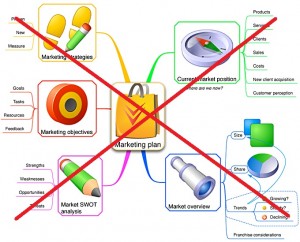 Sometimes, I’m posed a question that I’m not sure that I should answer.
Sometimes, I’m posed a question that I’m not sure that I should answer.
Case in point: Drew asked a question about my 7 Million Dollar Journey :
What were the terms of your first $1.25 million building purchase in 2001? You mentioned you had been in debt and had been losing money in your business until sometime in 2000 when you began to turn a profit. You had to have had a lot of profits quickly to put together the down payment for the building and be approved for a loan in such a short time period after years of money losing operations.
A straight-forward question, but the answer isn’t straight-forward … there’s a question of ethics and also a question of giving my readers potentially dangerous strategies.
After much uhmm’ing and aah’ing, I’ve decided that honesty is the best policy and to throw it to my readers to decide on the issues of ethics and danger:
As I mentioned, I had only recently become profitable, yet I managed to:
1. Stump up the 25% deposit on a $1.25 million commercial real-estate purchase,
2. Make the mortgage payments,
3. Make the additional lease payments on the $400k rehab and fit-out required.
Quite a tall order, so here’s how I managed it:
First, I made sure that I was profitable enough to:
i) Make the mortgage payments as and when due,
ii) Keep up with the lease payments,
iii) Pay back the deposit
Did you catch that?
Number (iii), I said: “Pay back the deposit”
You see, I actually borrowed 100%+ (i.e. the deposit, the mortgage set up fees, and the closing costs), but here is where the question of ethics and danger come into it …
… I borrowed the deposit and the closing costs from my customers!
And, here’s where ‘ethics’ come into the picture – my customers didn’t know!
You see, one of the easiest, best, but most dangerous ways to raise money, is to raise it from your customers.
How?
It’s actually quite simple: most businesses have large inventories (the goods that you hold in stock), accounts payable (money that you owe your suppliers) and accounts receivable (money that your customers owe you).
Any and all of these have value.
For example, it’s quite a normal/accepted practice to borrow against the value of your inventory; unfortunately, your bank may not want to take the risk, and your finance broker may only give you a little money at a high interest cost because of the perceived risk (after all, do they really know how to sell the inventory if you default?).
It’s also quite normal to leverage the value in your receivables by approaching a specialist finance company to ‘factor’ those debts: that means that instead of waiting 4 to 6 weeks for your customers to pay, the finance company may advance you up to 80% of the value of those debts (i.e. your total receivables). This is, in fact, one of the businesses that I still own.
But, there is a third method that requires no bank or finance company to get involved: it’s simply to pay your suppliers slower than your customers pay you!
My business, being a services business had no stock (so no inventory finance opportunity), and factoring can have the stigma of a weak business so I didn’t want to go that route with my ‘Fortune 500’ corporate clients.
But, I did have a very tight contract that saw my largest clients paying my invoices in just 7 days (really!), yet I was only obligated to pay my suppliers in 30 to 60 days. Further, my turnover was huge (compared to my fees) because of the nature of my business.
This meant, effectively, that I had a line of finance equal to 3 to 7 weeks of my sales/turnover!
That was more than enough to raise the deposit for the building.
OK, back to my initial reticence to share this with you:
1. In most businesses, the turnover isn’t large enough, and the negotiated spread between accounts payable/receivable large enough to raise very much cash,
2. I think it’s ethical to use these funds for your business (unless you have lead your customers to believe that these funds are to be, somehow, quarantined and/or held in trust), borderline to use them for the building that houses the business (for example is the building going to be bought in the name of the business, or in a separate entity as I would normally recommend?), and unethical to use them for personal use / purchases outside the business … but, ethics is in the eye of the beholder, so YOU tell me what you think?!
3. I think it’s dangerous because your business MUST have the necessary solvency (not just profitability) to not only keep up with the payments (both mortgage and lease) as well as to ‘buy back’ the deposit over a relatively short period of time (in my case, 12 to 18 months).
So, now you are armed with a powerful – and dangerous – business financing tool. Use it wisely … and, sparingly!












